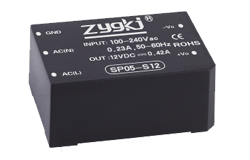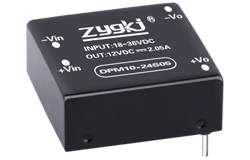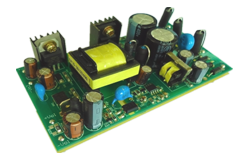消息
Modular vs Non-Modular Power Supplies: Which Is the Better Choice?
Author: ZYG Power Module Time: 2023-10-18
When it comes to building a computer, one of the key components that often gets overlooked is the power supply. While it might not be as glamorous as the latest graphics card or processor, the power supply is an essential part of any computer system. It is responsible for supplying the necessary electrical power to all the components in the computer, ensuring smooth and reliable operation. However, when it comes to choosing a power supply, there are two main options to consider: modular and non-modular. In this article, we will delve into the differences between these two types and determine which one is the better choice.
Firstly, let’s define what modular and non-modular power supplies are. A non-modular power supply comes with a fixed set of cables attached to it. These cables are permanently connected to the power supply and cannot be removed or replaced. On the other hand, a modular power supply comes with detachable cables that can be connected as needed. This means that you only need to use the cables that are necessary for your specific computer setup, reducing cable clutter inside the case.
One of the main advantages of modular power supplies is their flexibility. With a modular power supply, you can easily add or remove cables depending on the components you are using. This allows for a cleaner and more organized computer build, as you can eliminate unnecessary cables and only use the ones you need. Additionally, modular power supplies make cable management much easier, as you can route and hide cables more efficiently.
Another benefit of modular power supplies is their ease of installation. Since you can choose which cables to use, you can avoid the hassle of having to bundle up and tuck away excess cables. This not only saves time during the installation process but also allows for better airflow inside the computer case. Good airflow is crucial for maintaining optimal temperatures and preventing overheating, especially when using high-performance components.
In terms of aesthetics, modular power supplies also have an advantage. With fewer cables cluttering the case, the overall appearance of the computer is cleaner and more professional. This is particularly important for users who value the visual appeal of their computer setup or those who have transparent side panels that showcase the internal components.
However, non-modular power supplies also have their merits. One of the main advantages of non-modular power supplies is their lower cost. Since they come with a fixed set of cables, production costs are generally lower, making them more affordable for budget-conscious consumers. Non-modular power supplies are also generally more widely available, making it easier to find a suitable option for your needs.

Moreover, non-modular power supplies are often preferred by users who prioritize reliability. With no detachable cables, there are no loose connections or potential points of failure. This can be especially important for users who plan to move their computer frequently or for those who want to minimize the risk of accidental disconnections.
Both modular and non-modular power supplies have their own set of advantages and disadvantages. Modular power supplies offer greater flexibility, easier cable management, improved airflow, and a cleaner aesthetic. On the other hand, non-modular power supplies are more affordable and generally considered to be more reliable. Ultimately, the choice between the two types depends on your specific needs and preferences. Whether you prioritize customization and ease of use or cost-effectiveness and reliability, it is important to carefully consider your options before making a decision.
以前的: Top Pick: 750W Modular Power Supply – Finding the Best Choice for Your Needs
下一个: Finding the Best Modular PC Power Supply: A Comprehensive Guide
相关信息
-
2023-6-12
Bidirectional DC DC Converter: A Two-Way Power Transfer Solution
A bidirectional DC-DC converter is a power transfer solution that allows for two-way power conversion between two different voltage levels. This type of converter is commonly used in applications where power needs to be transferred bidirectionally, such as in electric vehicles, renewable energy systems, and battery charging systems. The bidirectional DC-DC converter is a device that converts power from a high voltage level to a low voltage level, or vice versa, depending on the direction of power flow. This is achieved by using a combination of power switches, inductors, capacitors, and control circuitry. The converter operates in two modes: buck mode and boost mode. In buck mode, the converter steps down the voltage from the high voltage level to the...
查看详情 -
2023-5-17
AC to DC Converter Available in Store
Are you in need of an AC to DC converter? Look no further than our store. We offer a wide range of AC to DC converters to suit your needs. Our converters are designed to convert AC power to DC power with high efficiency and reliability. They are perfect for use in a variety of applications, including powering electronics, LED lighting, and motors. We offer a range of sizes and wattages to choose from, so you can find the perfect converter for your specific needs. Our selection includes single and multiple output converters, as well as constant voltage and constant current converters. All of our converters are built with quality components and are rigorously tested to ensure they meet our...
查看详情 -
2023-5-8
Designing an AC-DC Converter Circuit: A Step-by-Step Guide
Introduction An AC-DC converter circuit is an electrical circuit that is used to convert alternating current (AC) to direct current (DC) voltage. This converter circuit is commonly used in electronic devices such as computers, televisions, and audio equipment. The AC-DC converter circuit design can be complex, and it requires a good understanding of electronic circuits, components, and their properties. In this article, we will provide a step-by-step guide to designing an AC-DC converter circuit. Step 1: Determine the Required Voltage and Current The first step in designing an AC-DC converter circuit is to determine the required voltage and current for your application. This will depend on the electronic device that you are designing the circuit for. For example, a computer...
查看详情 -
2023-5-2
Understanding AC-DC Power Supply: A Comprehensive Guide
An AC-DC power supply is a device that converts AC voltage into DC voltage. This type of power supply is essential for many electronic devices that require a stable and reliable source of DC power. In this guide, we will take a comprehensive look at AC-DC power supplies, including their types, specifications, applications, and common issues. Types of AC-DC Power Supplies There are several types of AC-DC power supplies, each with its own unique characteristics and applications: 1. Linear Regulated Power Supplies: These power supplies use a linear regulator to reduce AC voltage to a stable DC voltage. They are simple, reliable, and inexpensive but generate a lot of heat and are not efficient. 2. Switching Power Supplies: These power...
查看详情 -
2022-5-20
Wholesale AC-DC converters make your equipment more convenient
AC-DC converters are used to convert alternating current (AC) to direct current (DC). These devices are used in a variety of applications, including power supplies for computers and electronics, automotive applications, and renewable energy systems. Wholesale AC-DC converters are a great way to save money on these devices. By buying in bulk, you can get a discount on the purchase price. These devices are available from a variety of suppliers, so it's important to compare prices and find the best deal. There are a few things to keep in mind when shopping for a wholesale AC-DC converter. First, be sure to find a supplier that offers a good warranty on the product. This will ensure you are...
查看详情 -
2023-7-9
Bidirectional DC-DC Converter: A Solution for Efficient Energy Conversion
Introduction In recent years, the demand for efficient energy conversion has been on the rise due to the increasing use of renewable energy sources and the need for energy storage systems. One key component in achieving efficient energy conversion is the bidirectional DC-DC converter. This article aims to explore the benefits and applications of bidirectional DC-DC converters in various industries. What is a Bidirectional DC-DC Converter? A bidirectional DC-DC converter is an electronic device that allows for the conversion of electrical energy between two DC voltage levels in either direction. It enables power flow in both forward and reverse directions, making it suitable for applications that require energy storage, such as electric vehicles, renewable energy systems, and grid-connected systems. Benefits...
查看详情


















